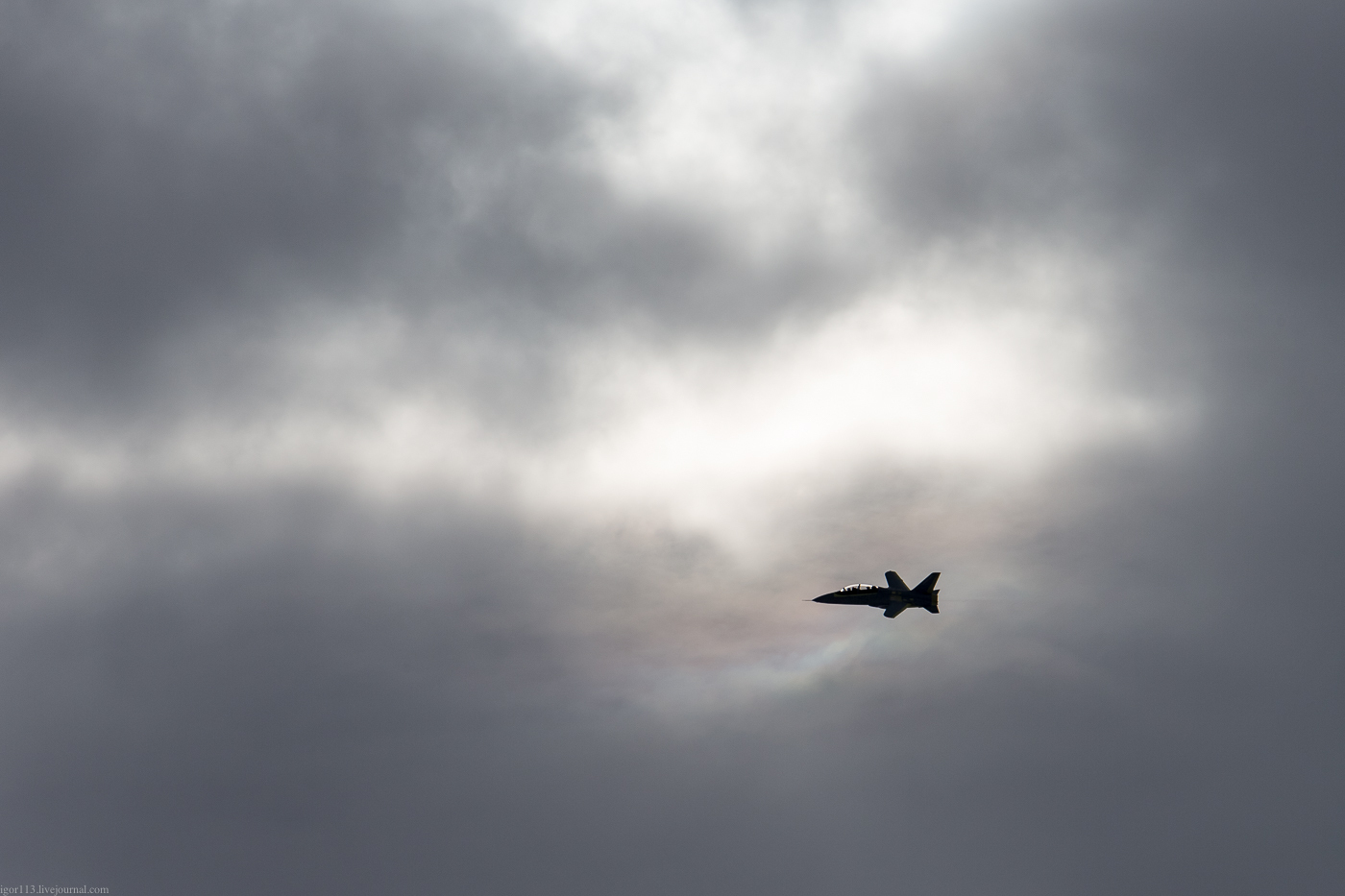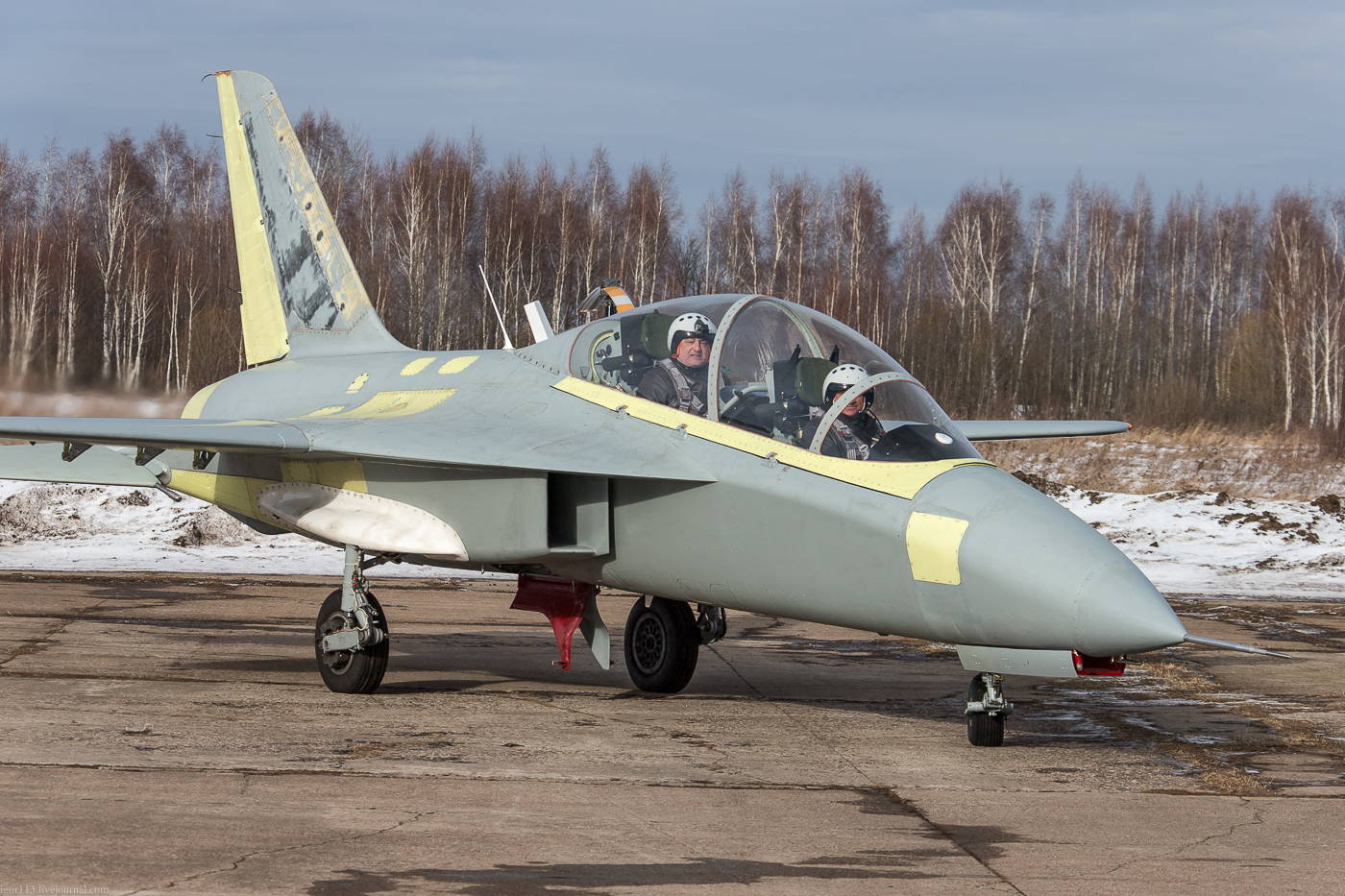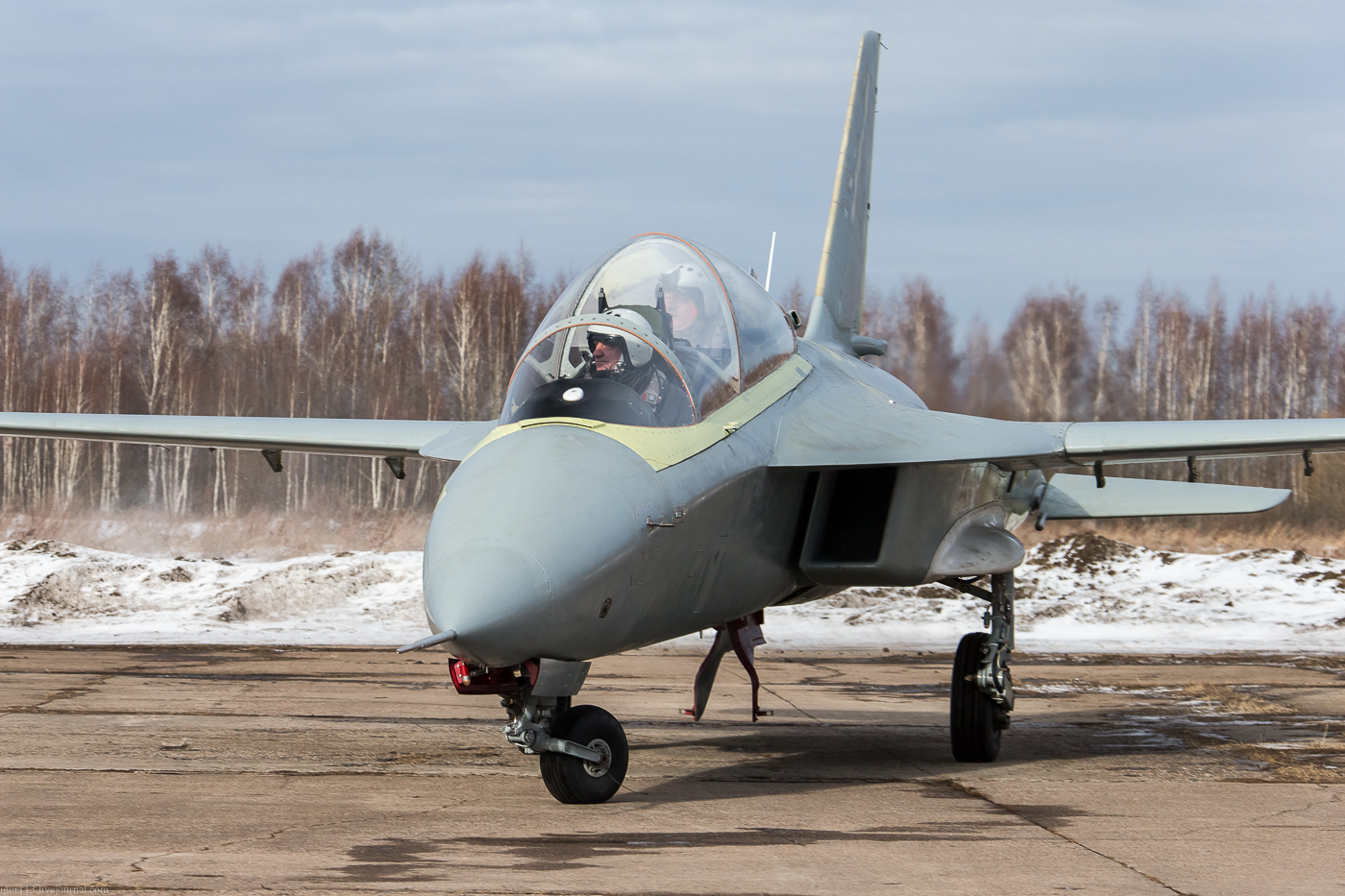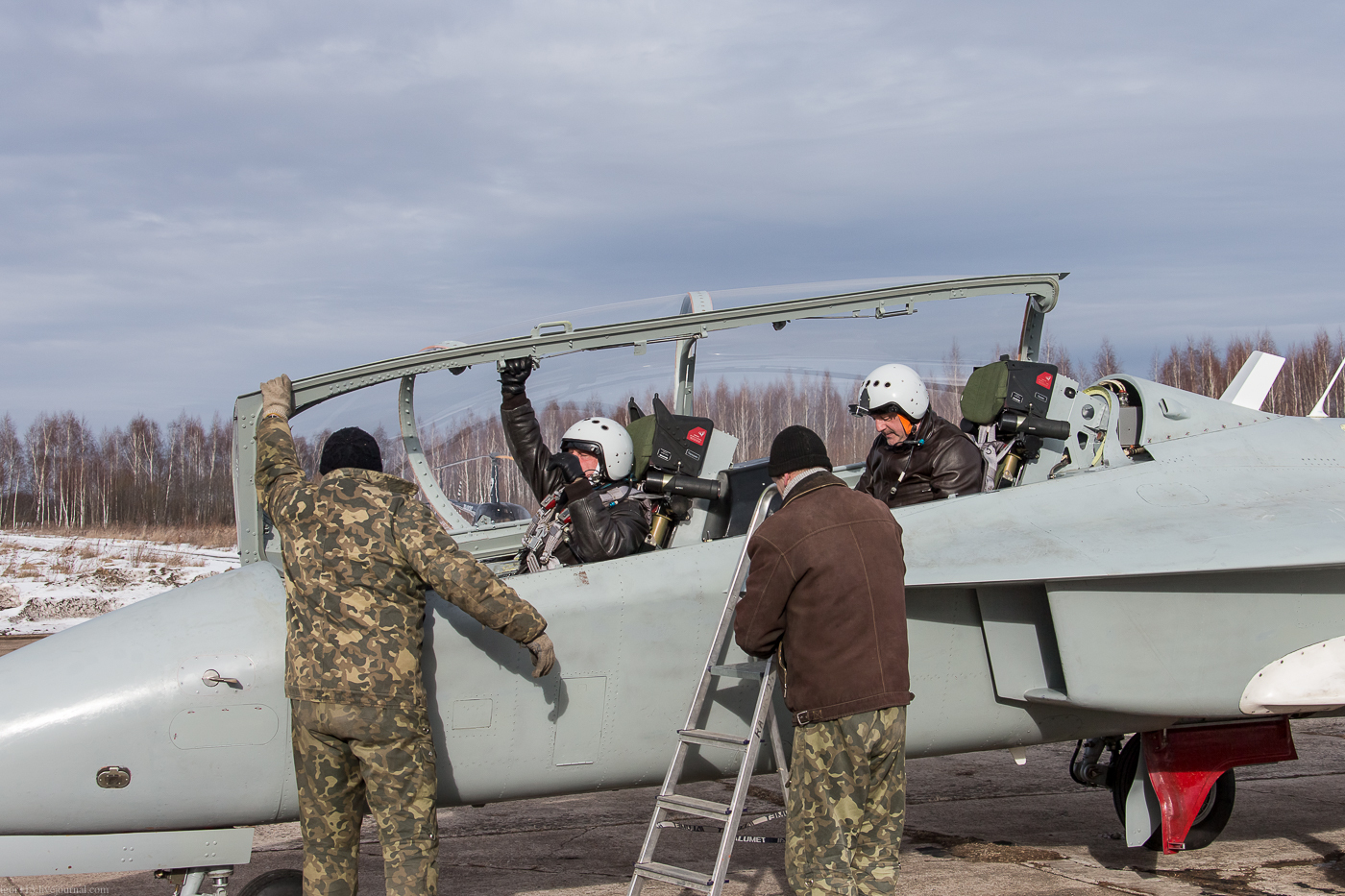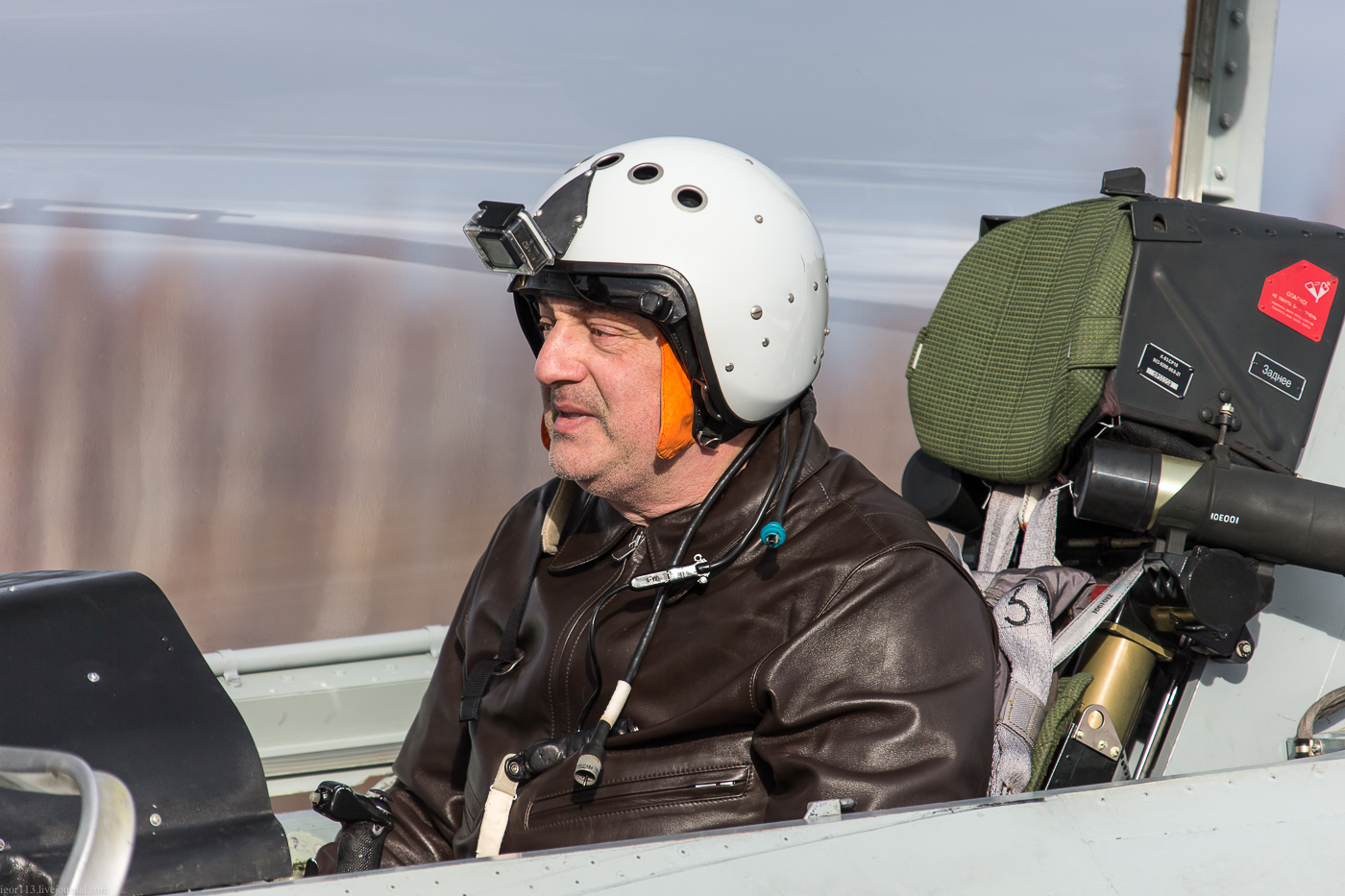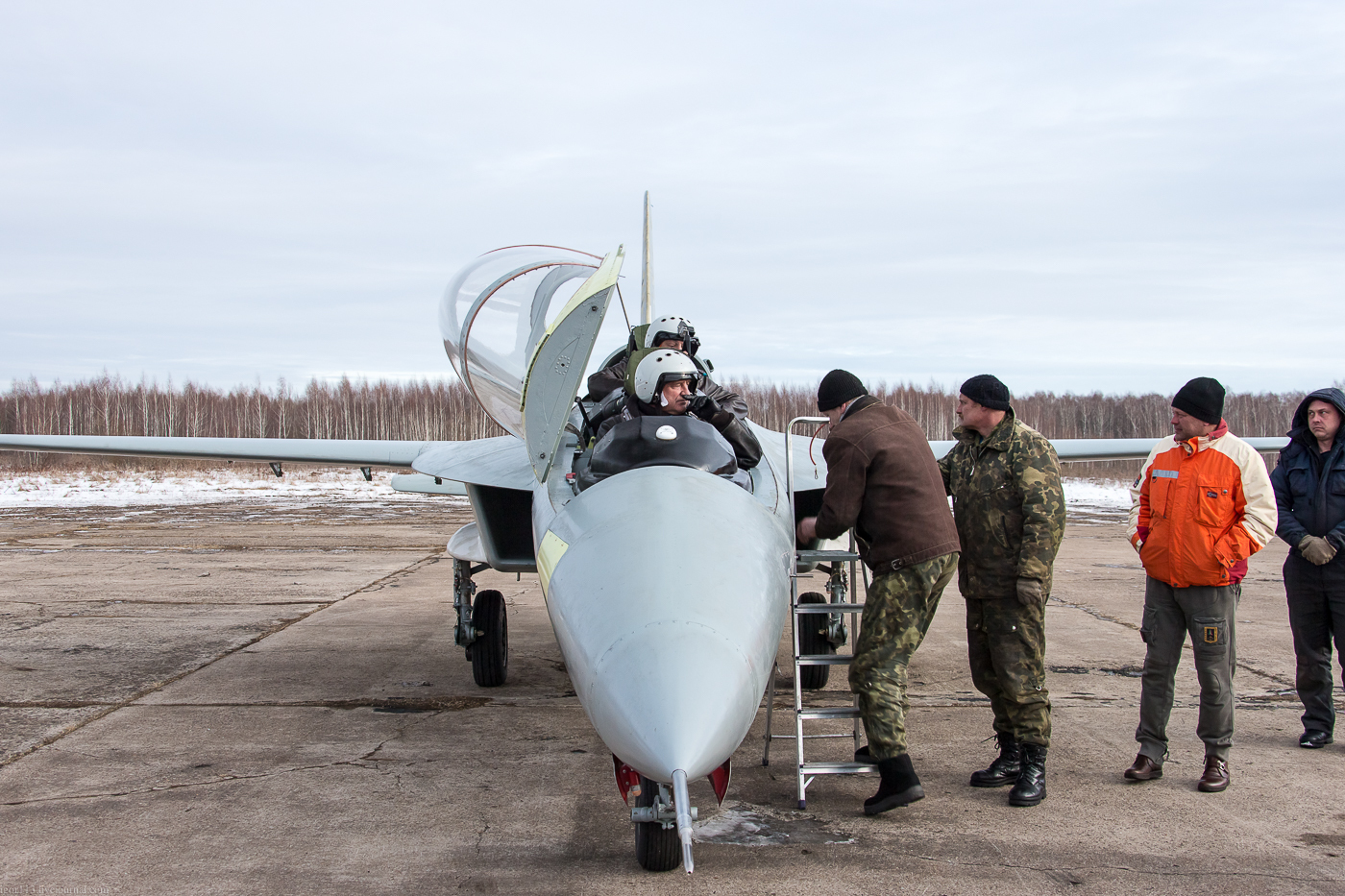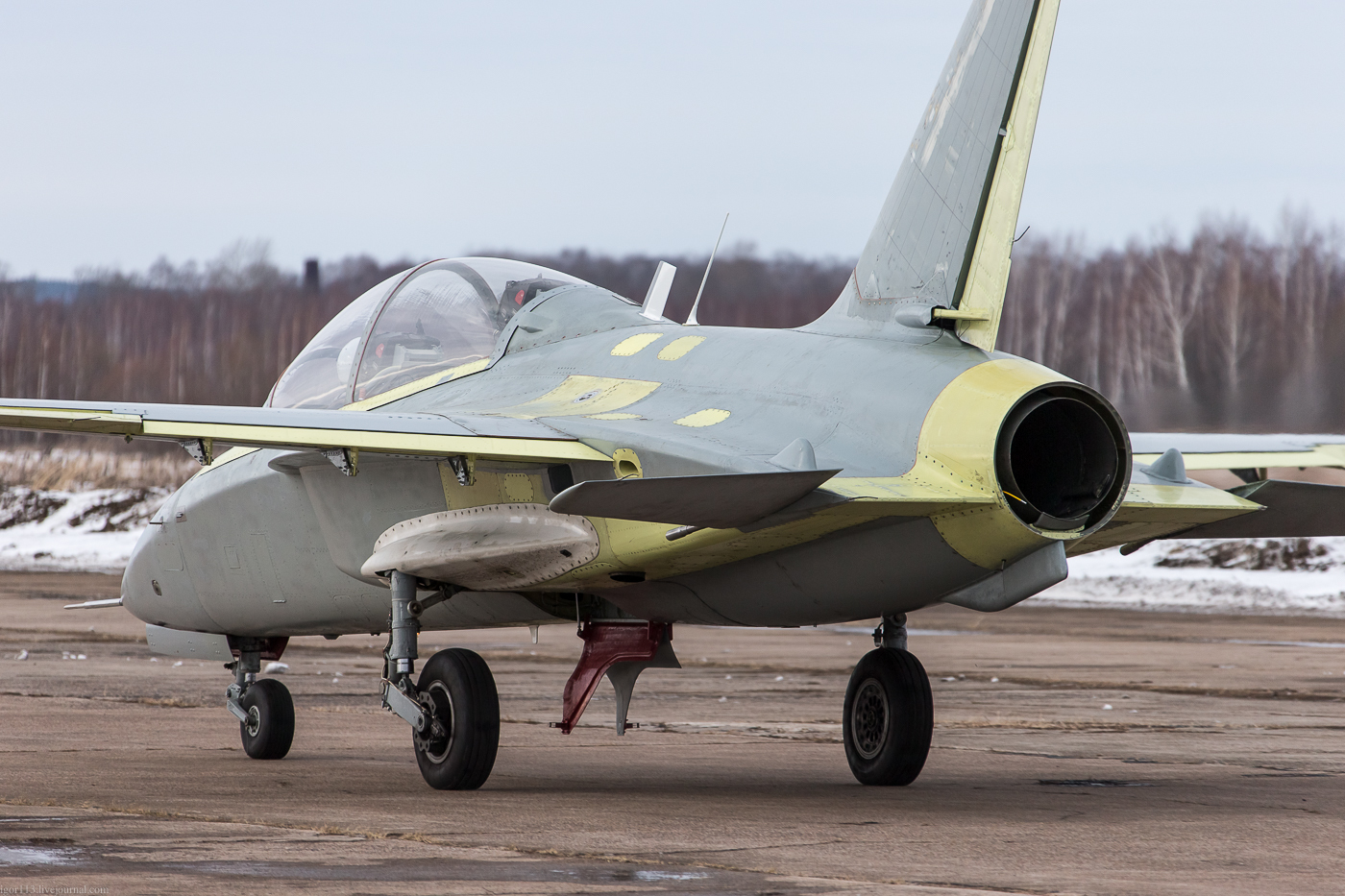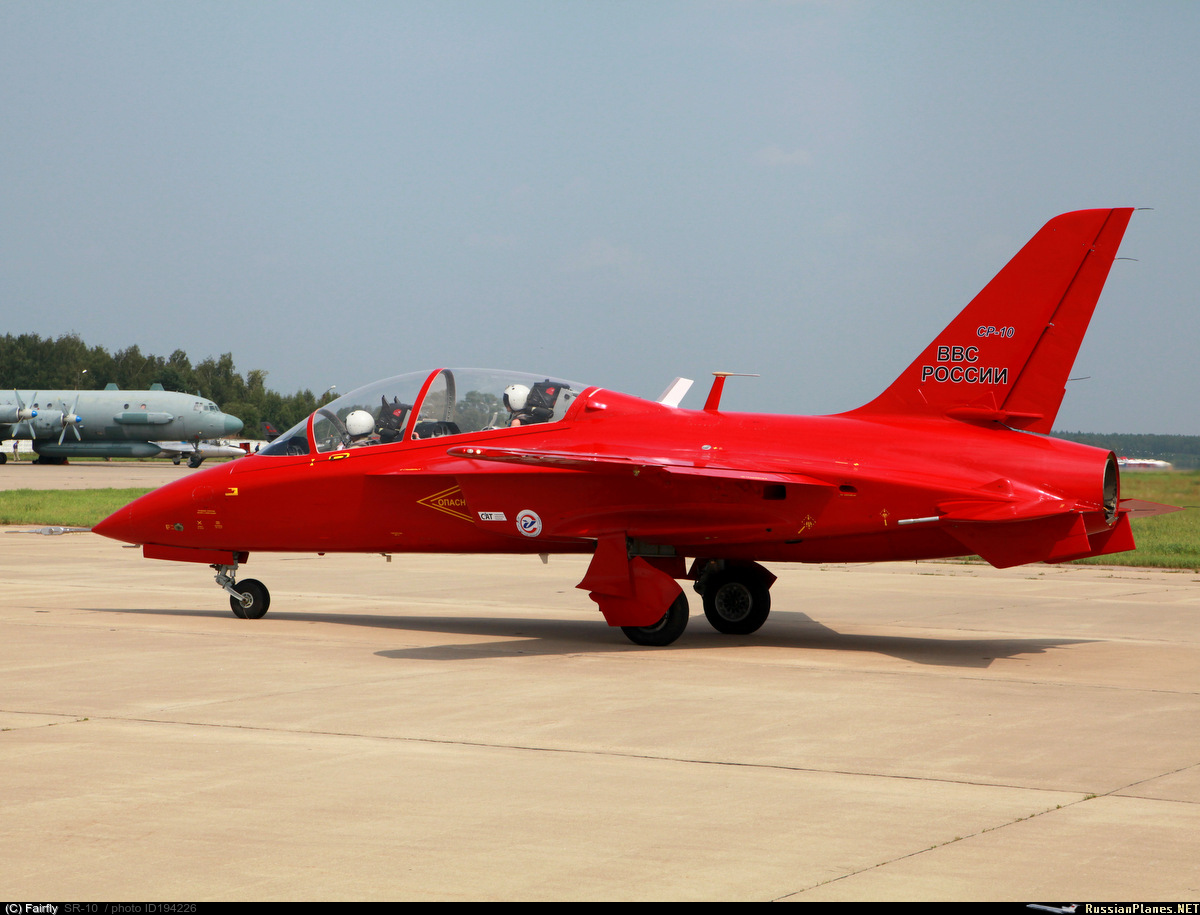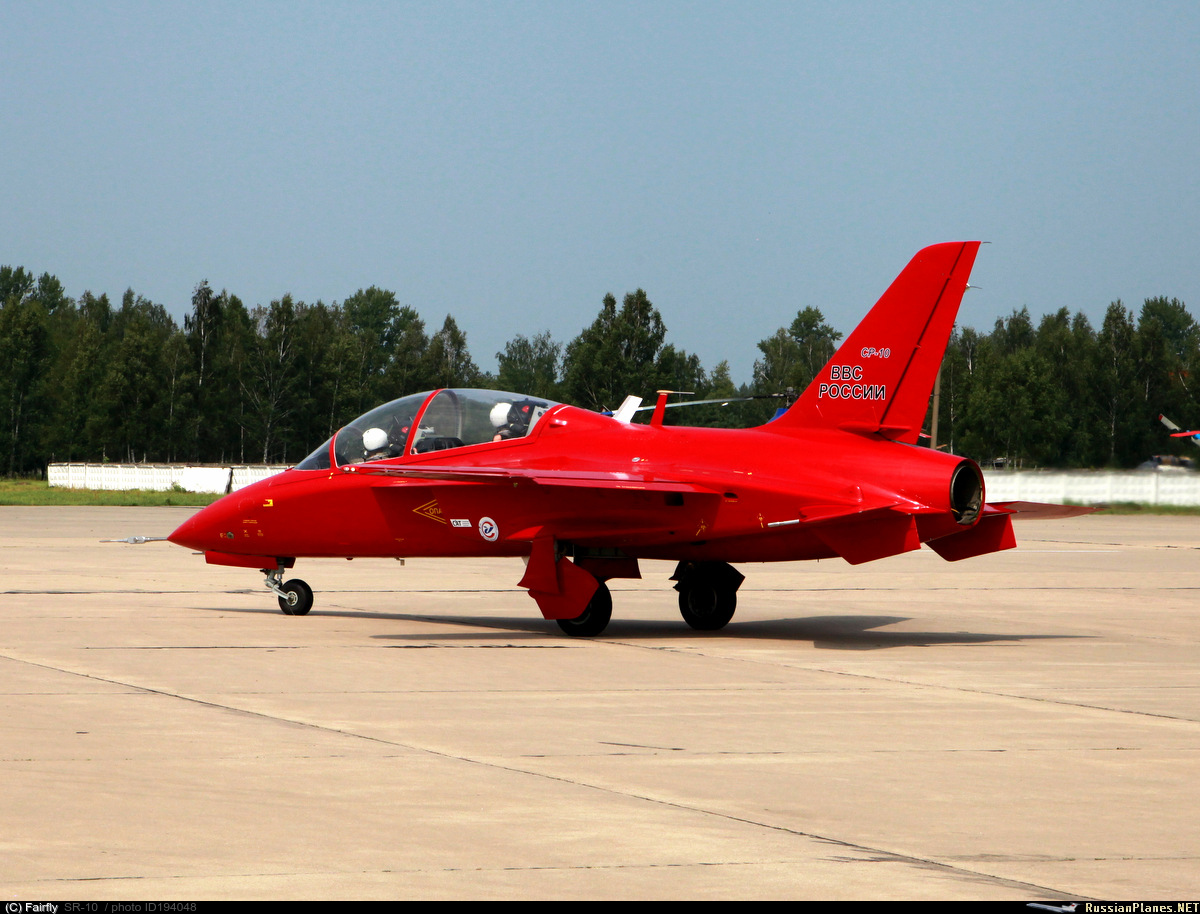SR-10 Low Cost Jet Trainer
- Thread starter gadeshi
- Start date
More options
Who Replied?gadeshi
New Member
- Joined
- Jun 19, 2013
- Messages
- 9,223
- Likes
- 6,636
No. SR-10 is a pure low cost basic jet trainer and sports aerobatic plane for civillian (paramilitar) DOSAAF volounteer aeroclubs and civil aviation flight schools.@gadeshi I have heard of a project to convert Yak 130 and other Russian trainer in light fighter jet similarly to tejas so will SR 10 also go this way and what is the cost per plane?
But in the future... Who knows, if there will be a dedicated customer who will be interested in ultra-light combat aircraft...
But currently they are not planning this.
Bahamut
New Member
- Joined
- Oct 31, 2015
- Messages
- 2,740
- Likes
- 2,259
Meet the SR-10 – Russia’s first privately designed trainer aircraft
February 29, 2016 VADIM MATVEYEV, SPECIAL TO RBTH
For the first time in the history of Russian aviation, a private design bureau has created an aircraft that can outperform its state-designed counterparts. The SR-10 light trainer plane is expected to go into production in 2017.
Facebook746
Twitter
LinkedIn11
Pinterest5
Russian design bureau starts developing 6th generation fighter
TAGS
AVIATION

The SR-10 light dual-pilot jet trainer aircraft. Source: Sat-kb/wikipedia.org
The SR-10 light dual-pilot jet trainer aircraft caused a sensation when it first took to the Russian skies in late December 2015. For the first time in Russian aviation, a private design bureau had created a plane – from scratch, without public financial support – which can edge out aircraft produced by the aviation industry's big guns in the markets.
A prototype unmanned aerial system is being designed on the basis of the SR-10. It will include the UAV Argument, which is an unmanned version of the SR-10. Information on this development has already been submitted for discussion by representatives of the Ministry of Defense, but a decision on the future of the UAV is yet to be made.
The trainer aircraft SR-10, fully assembled from domestic components, is proposed to be an intermediate trainer between the light Yak-152, which is designed for the basic flight training of military pilots, and the trainer/attack aircraft Yak-130. This niche is now occupied by the Czech L-39.
Designed in Moscow, built in the Caucasus
"The Russian air force needs an easy, simple and inexpensive jet trainer to replace the L-39 fleet, and the Russian military are showing interest in the SR-10 project," said Maxim Mironov, director of the Modern Aviation Technologies Design Bureau, in an interview with the industry website AviaPort.
SR-10: General characteristics and performance
Maximum takeoff weight: 2.7 tons;
Range: 1,000 miles;
Speed: up to 600 mph;
Crew: 2 people.
"The MiG-AT, a simpler and cheaper plane compared to the Yak-130, failed to be delivered, and now there is a gap between the basic trainer Yak-152 and the trainer/attack aircraft Yak-130," said Mironov.
Developed by the private design bureau in Moscow and built by aircraft manufacturers at a factory in Makhachkala in Russia’s North Caucasus republic of Dagestan (for which it received the nickname of "Dagestani"), the SR-10 is a single-engine jet aircraft, fitted with a single forward-swept wing, allowing for excellent maneuverability.
The somewhat unusual aerodynamic design, which gives the aircraft a futuristic look, makes piloting the aircraft easier. The machine even forgives some pilot errors that inevitably arise in the training process.
What’s more, the aircraft has no restrictions on performing aerobatic figures. Air cadets can execute the same spectacular stunts in the SR-10, as in fourth- and fourth-plus-generation combat aircraft (Su-27, Su-35, MiG-29).
Private aircraft industry breakthrough
"This is a breakthrough in private aircraft construction. To create a jet is a high level of technology for any country," Viktor Galenko, pilot and head of the Aviator.guru website, said in an interview with RBTH.
"The SR-10 has a very low operating cost compared to other machines. It is very simple to manufacture. The machine is good for training cadets and for pilots' training in the army, meaning less expenditure on the very expensive resources of military aircraft," said Galenko.
Video by Elijah Titorenko / YouTube
The aircraft is currently being tested at the Gromov Flight Research Center in Moscow, with plans underway to build the first 16 SR-10 aircraft later this year. Mass production will begin in 2017.
The developers expect that the Russian military will be happy with the aircraft, and the Aerospace Forces will be able – for the first time in history – to adopt a plane developed by a private design bureau without the involvement of public funds.
The Ministry of Defense is waiting for the end of the testing and, if successful, is ready to buy four of the aircraft. The Modern Aviation Technologies Design Bureau has estimated the military department's needs at 100 SR-10 aircraft in the next four years.
The SR-10 has also attracted interest from the military of a number of foreign countries, where military pilots fly the same Czech L-39 as their Russian colleagues. At present the export potential of the aircraft is estimated at 200 machines.
February 29, 2016 VADIM MATVEYEV, SPECIAL TO RBTH
For the first time in the history of Russian aviation, a private design bureau has created an aircraft that can outperform its state-designed counterparts. The SR-10 light trainer plane is expected to go into production in 2017.
Facebook746
LinkedIn11
Pinterest5
Russian design bureau starts developing 6th generation fighter
TAGS
AVIATION

The SR-10 light dual-pilot jet trainer aircraft. Source: Sat-kb/wikipedia.org
The SR-10 light dual-pilot jet trainer aircraft caused a sensation when it first took to the Russian skies in late December 2015. For the first time in Russian aviation, a private design bureau had created a plane – from scratch, without public financial support – which can edge out aircraft produced by the aviation industry's big guns in the markets.
A prototype unmanned aerial system is being designed on the basis of the SR-10. It will include the UAV Argument, which is an unmanned version of the SR-10. Information on this development has already been submitted for discussion by representatives of the Ministry of Defense, but a decision on the future of the UAV is yet to be made.
The trainer aircraft SR-10, fully assembled from domestic components, is proposed to be an intermediate trainer between the light Yak-152, which is designed for the basic flight training of military pilots, and the trainer/attack aircraft Yak-130. This niche is now occupied by the Czech L-39.
Designed in Moscow, built in the Caucasus
"The Russian air force needs an easy, simple and inexpensive jet trainer to replace the L-39 fleet, and the Russian military are showing interest in the SR-10 project," said Maxim Mironov, director of the Modern Aviation Technologies Design Bureau, in an interview with the industry website AviaPort.
SR-10: General characteristics and performance
Maximum takeoff weight: 2.7 tons;
Range: 1,000 miles;
Speed: up to 600 mph;
Crew: 2 people.
"The MiG-AT, a simpler and cheaper plane compared to the Yak-130, failed to be delivered, and now there is a gap between the basic trainer Yak-152 and the trainer/attack aircraft Yak-130," said Mironov.
Developed by the private design bureau in Moscow and built by aircraft manufacturers at a factory in Makhachkala in Russia’s North Caucasus republic of Dagestan (for which it received the nickname of "Dagestani"), the SR-10 is a single-engine jet aircraft, fitted with a single forward-swept wing, allowing for excellent maneuverability.
The somewhat unusual aerodynamic design, which gives the aircraft a futuristic look, makes piloting the aircraft easier. The machine even forgives some pilot errors that inevitably arise in the training process.
What’s more, the aircraft has no restrictions on performing aerobatic figures. Air cadets can execute the same spectacular stunts in the SR-10, as in fourth- and fourth-plus-generation combat aircraft (Su-27, Su-35, MiG-29).
Private aircraft industry breakthrough
"This is a breakthrough in private aircraft construction. To create a jet is a high level of technology for any country," Viktor Galenko, pilot and head of the Aviator.guru website, said in an interview with RBTH.
"The SR-10 has a very low operating cost compared to other machines. It is very simple to manufacture. The machine is good for training cadets and for pilots' training in the army, meaning less expenditure on the very expensive resources of military aircraft," said Galenko.
Video by Elijah Titorenko / YouTube
The aircraft is currently being tested at the Gromov Flight Research Center in Moscow, with plans underway to build the first 16 SR-10 aircraft later this year. Mass production will begin in 2017.
The developers expect that the Russian military will be happy with the aircraft, and the Aerospace Forces will be able – for the first time in history – to adopt a plane developed by a private design bureau without the involvement of public funds.
The Ministry of Defense is waiting for the end of the testing and, if successful, is ready to buy four of the aircraft. The Modern Aviation Technologies Design Bureau has estimated the military department's needs at 100 SR-10 aircraft in the next four years.
The SR-10 has also attracted interest from the military of a number of foreign countries, where military pilots fly the same Czech L-39 as their Russian colleagues. At present the export potential of the aircraft is estimated at 200 machines.
gadeshi
New Member
- Joined
- Jun 19, 2013
- Messages
- 9,223
- Likes
- 6,636
This is not for VKS.Has the Air Force placed any orders for this plane or is it just a proposal at this stage? Either way it's a great concept and the FSW layout on a trainer was never seen before I think.
SR-10 is a low coast pure trainer (without weapons) for civil aviation flight schools and DOSAAF volounteers aeroclubs and air sports aerobatic teams.
So if VKS will place some orders on this, they will be for DOSAAF only.
HariPrasad-1
New Member
- Joined
- Jan 7, 2016
- Messages
- 9,645
- Likes
- 21,138
Russians are masters of designing the planes and nobody can beat them. I watched the video of HTP trainer. It seem to have a very decent climb rate.
gadeshi
New Member
- Joined
- Jun 19, 2013
- Messages
- 9,223
- Likes
- 6,636
| Thread starter | Similar threads | Forum | Replies | Date |
|---|---|---|---|---|
|
|
Sukhoi jets to fly high,maintenance costs low, say RMAF | China | 0 | |
|
|
ISRO's low-cost launch service irks US companies | Indian Space Program | 51 | |
|
|
Low-cost coastal defenses | Land Forces | 5 | |
|
|
Low-cost Aakash 2 tablet launched in India at Rs 1,130 | Economy & Infrastructure | 12 |
Articles
-
India Strikes Back: Operation Snow Leopard - Part 1
- mist_consecutive
- Replies: 9
-
Aftermath Galwan : Who holds the fort ?
- mist_consecutive
- Replies: 33
-
The Terrible Cost of Presidential Racism(Nixon & Kissinger towards India).
- ezsasa
- Replies: 40
-
Modern BVR Air Combat - Part 2
- mist_consecutive
- Replies: 22
-
Civil & Military Bureaucracy and related discussions
- daya
- Replies: 32






